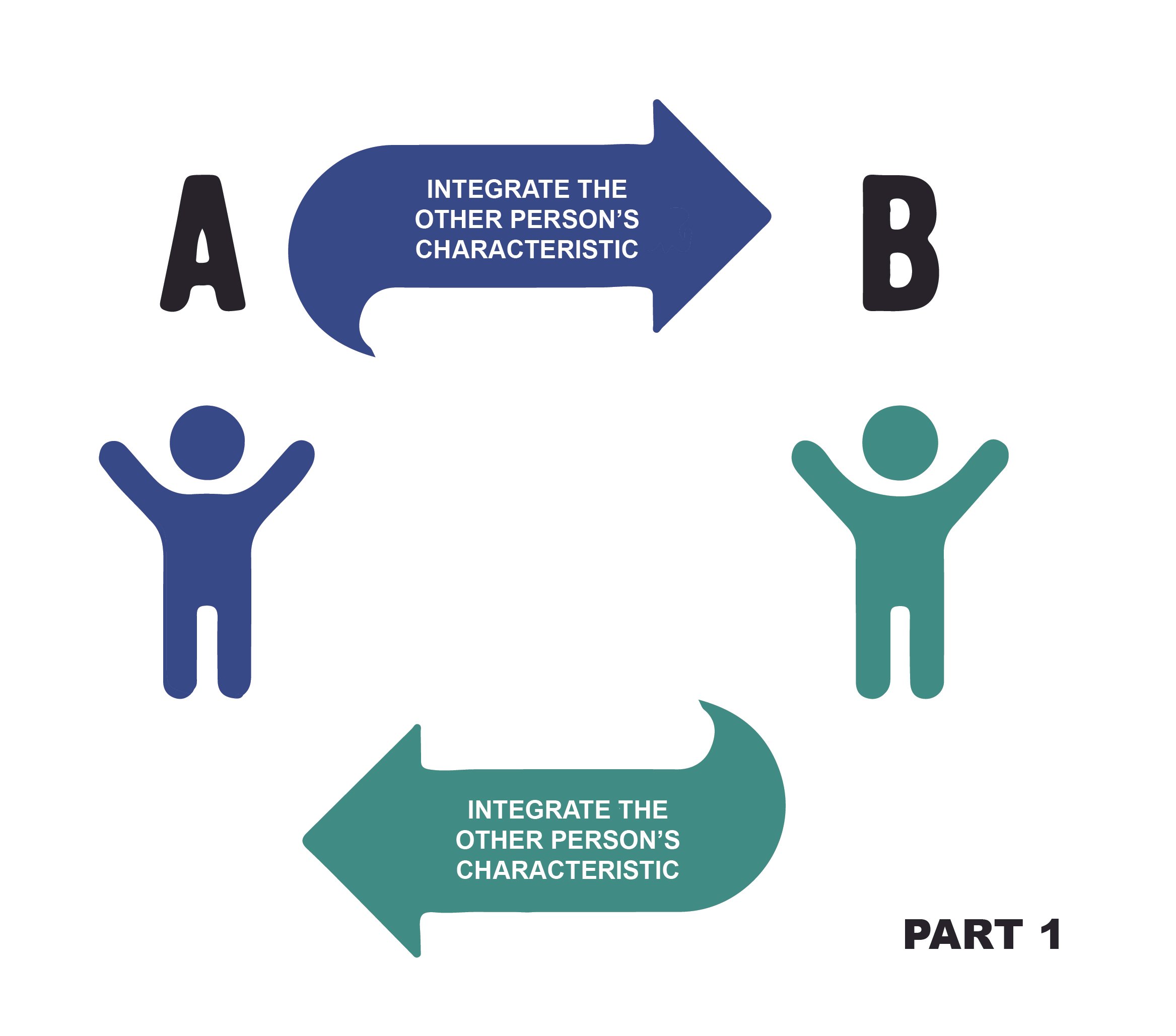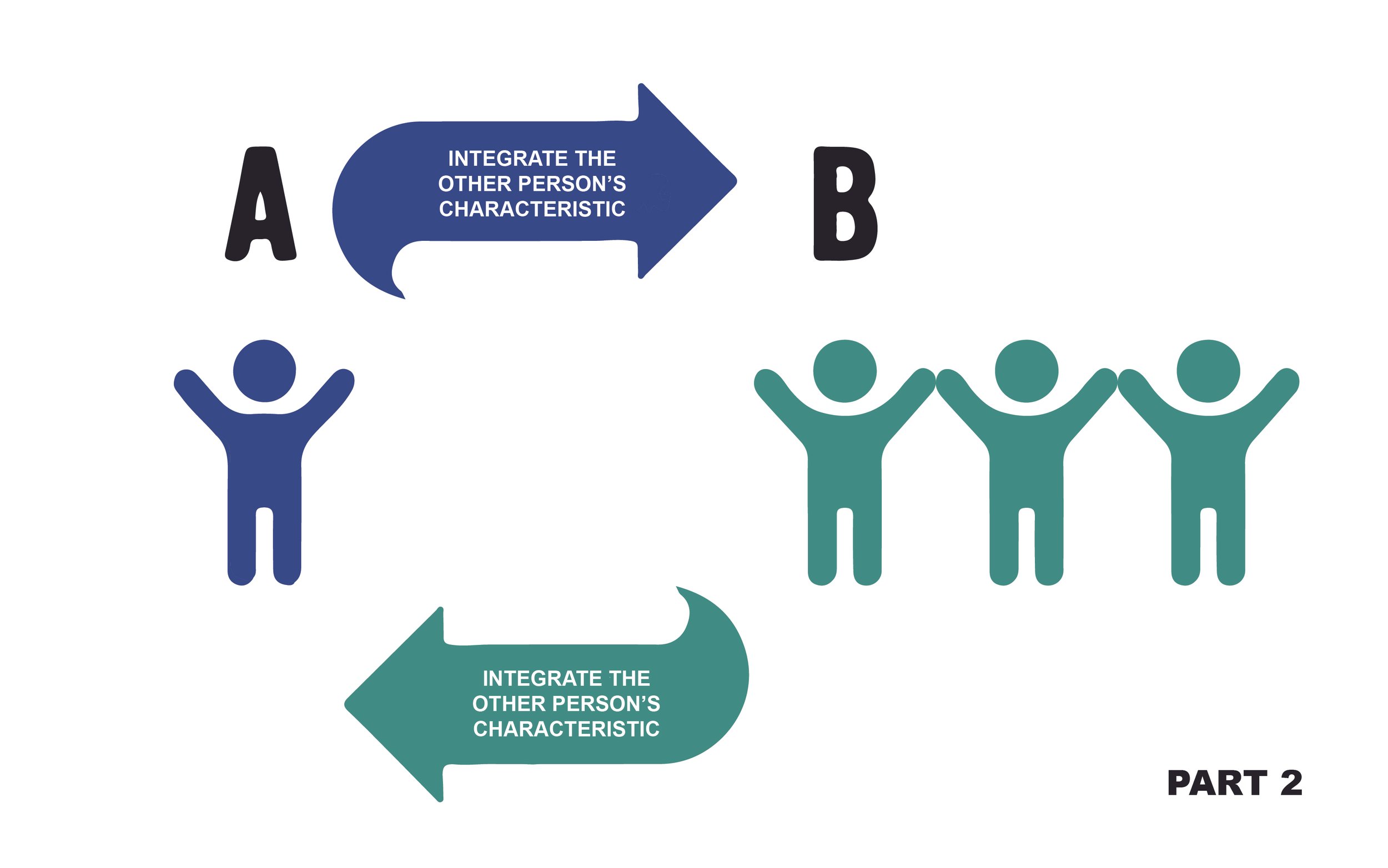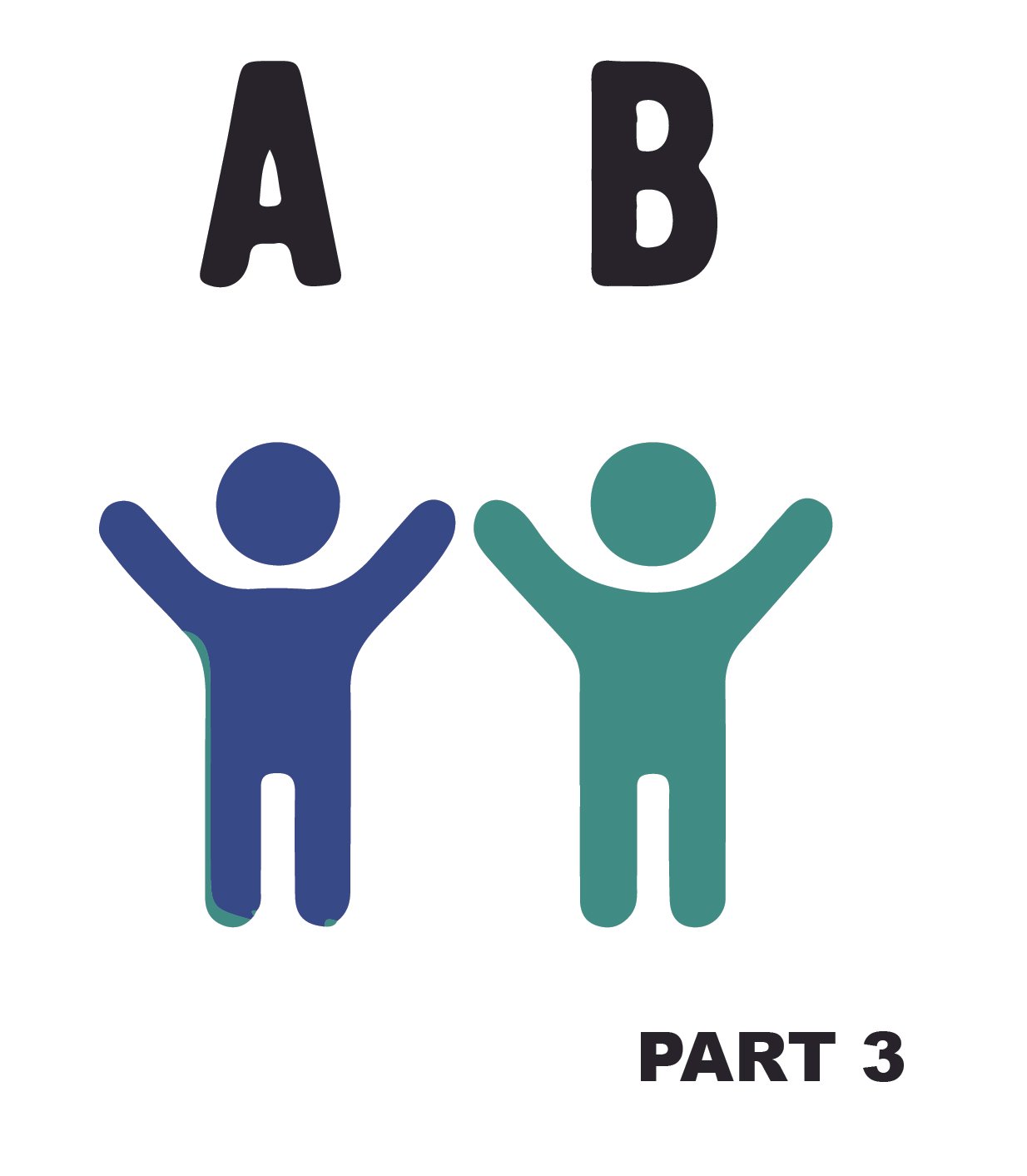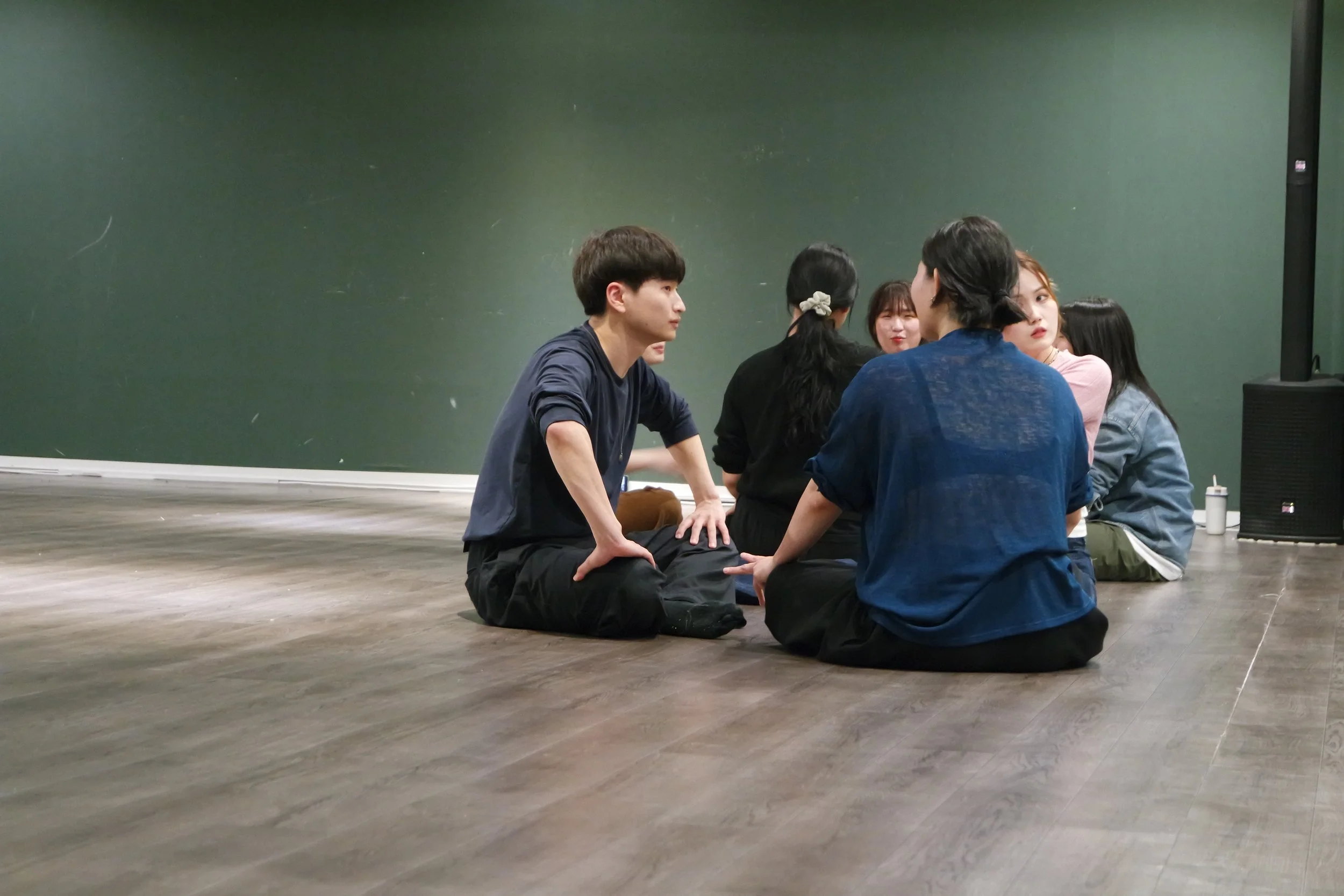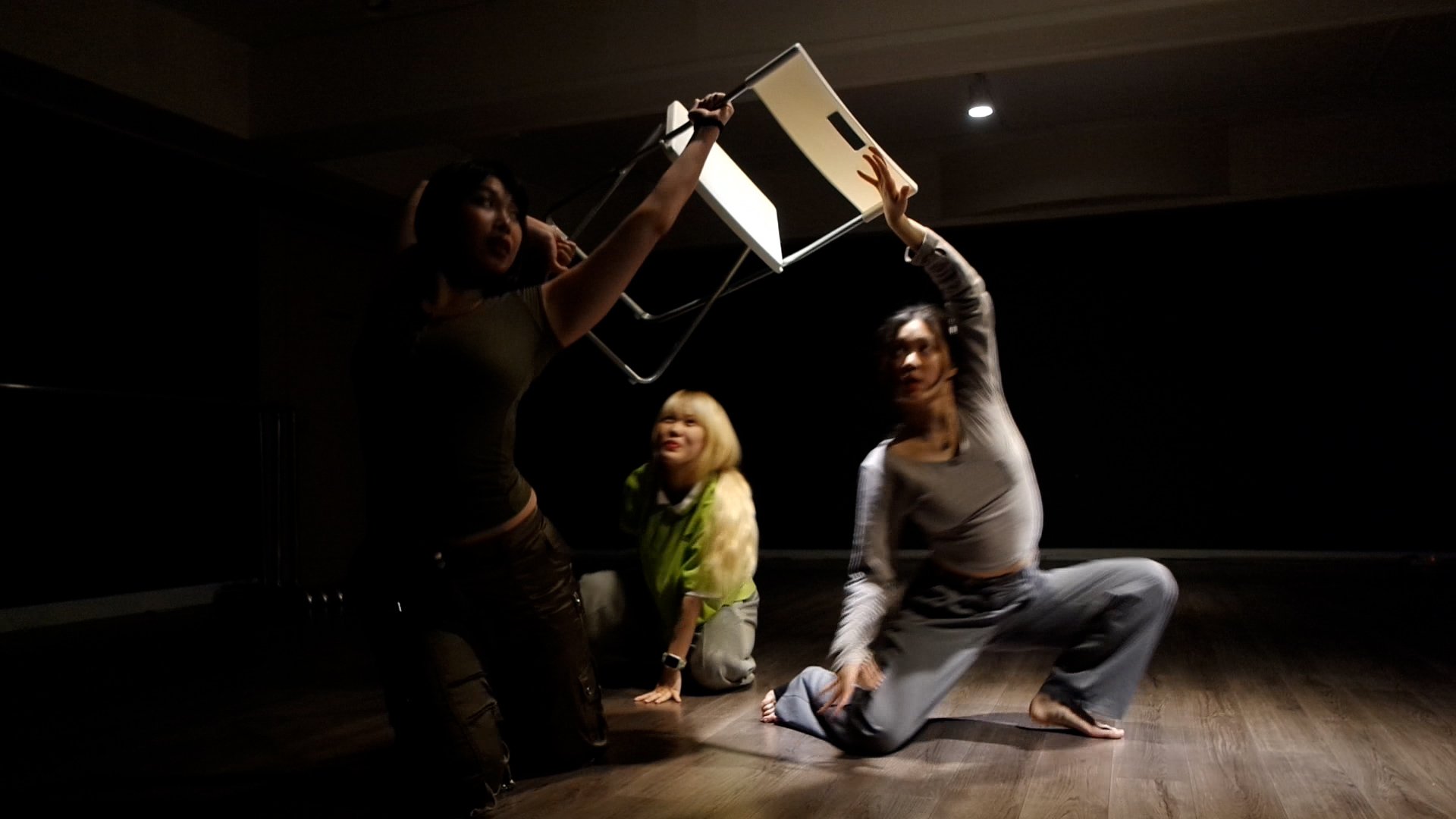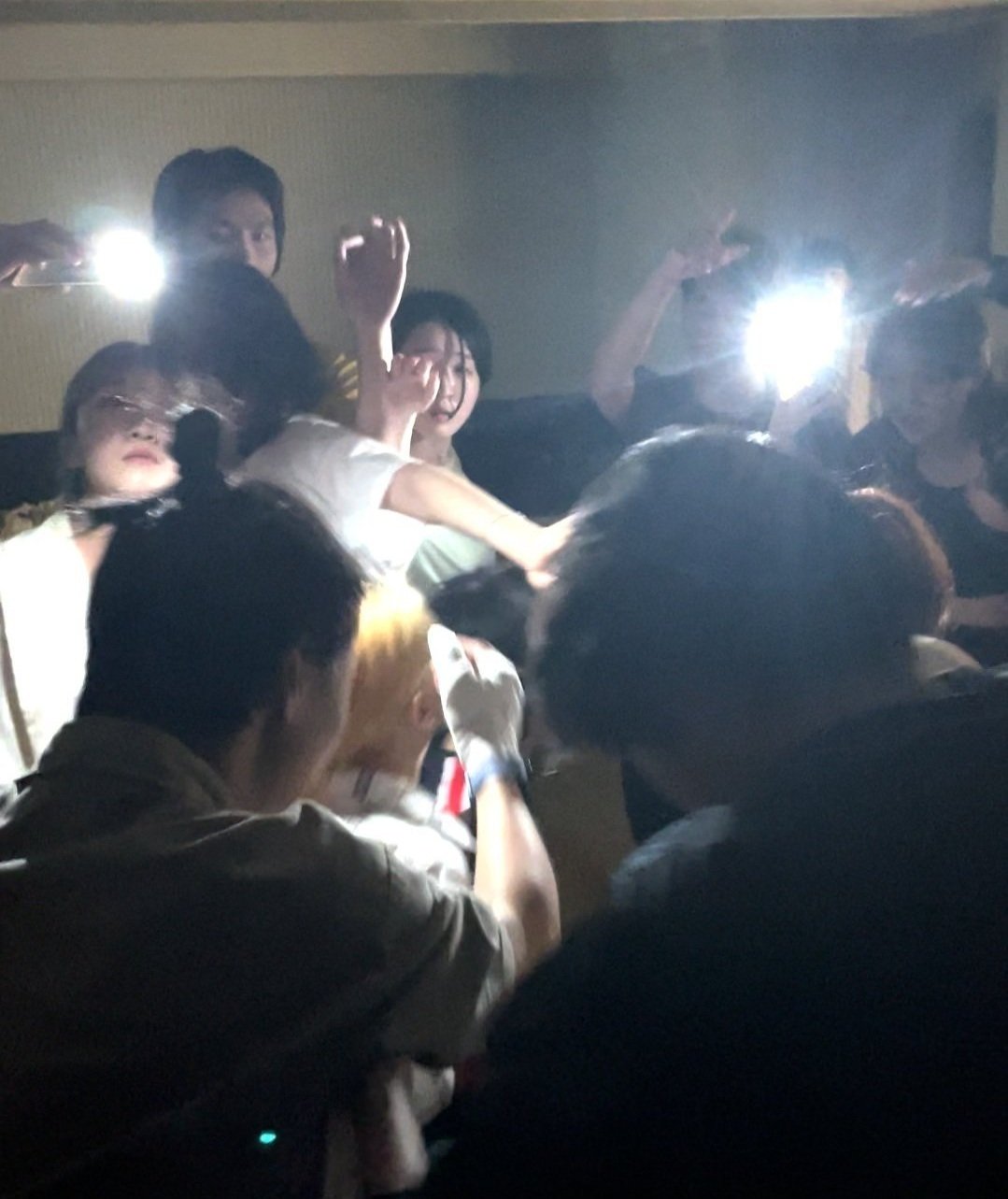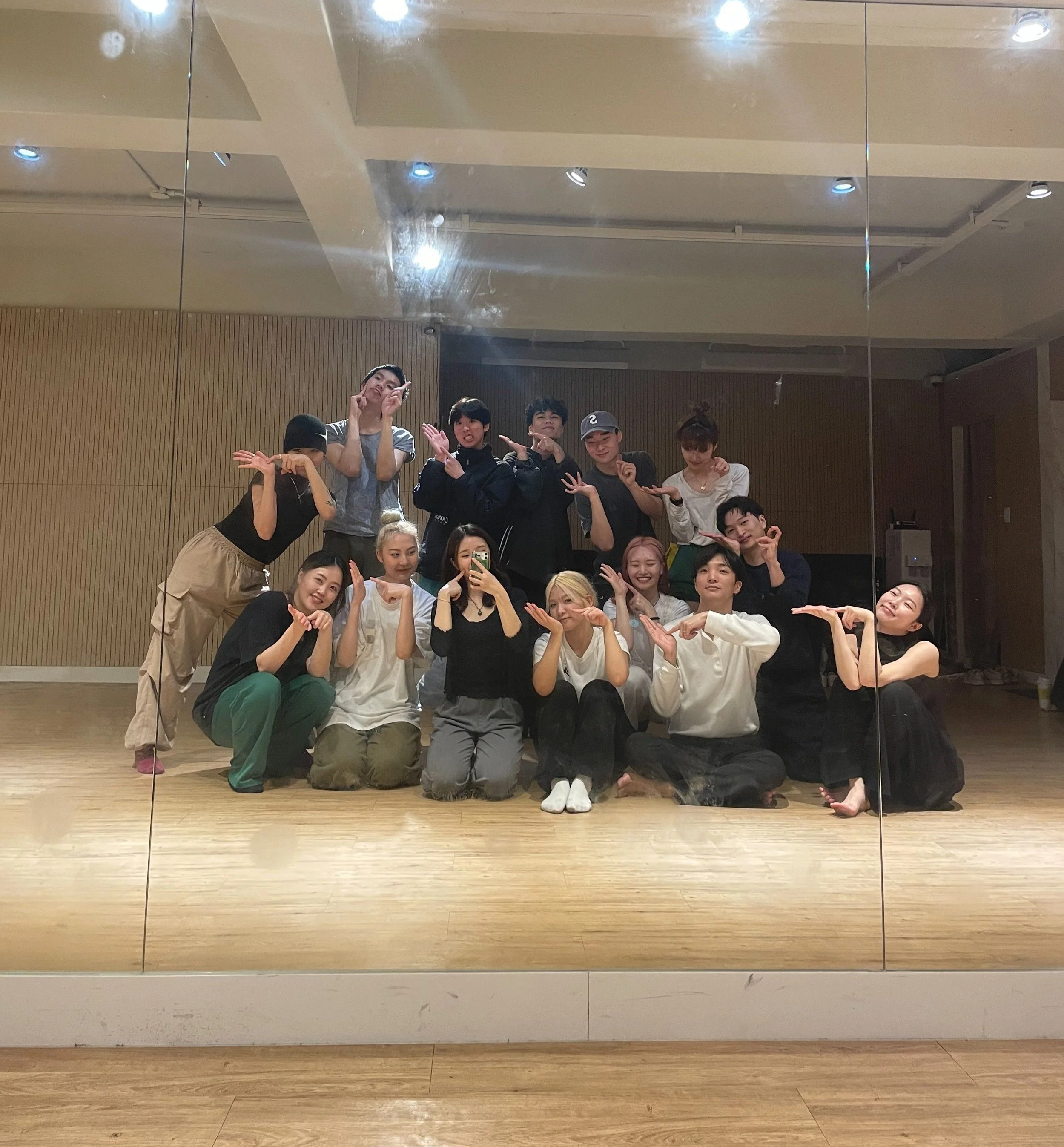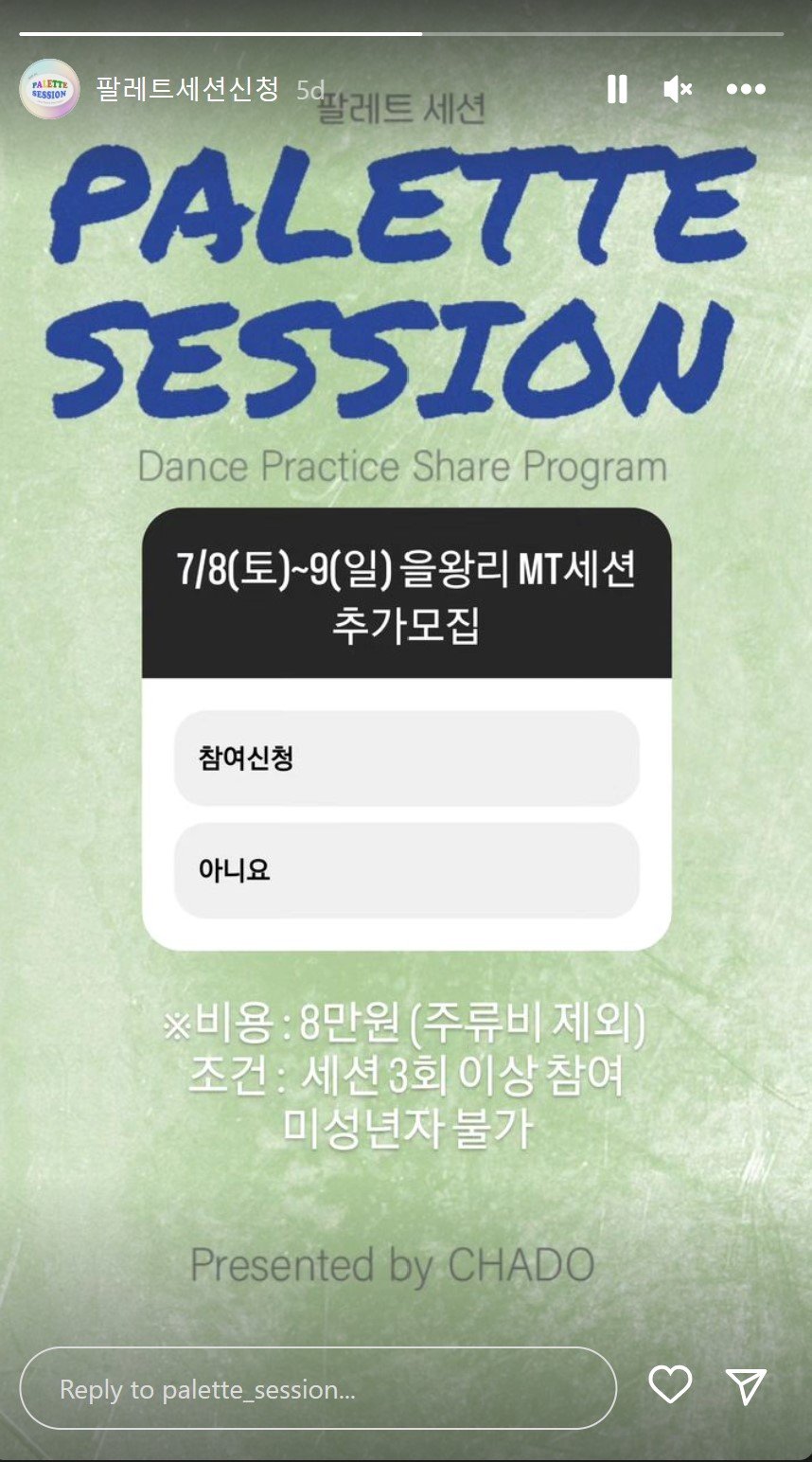SHARING SPACE AND MOVEMENT IN KOREA: PALETTE SESSION
by Dylan Goh | 17 July 2023
Interview with street dancers / organisers CHAEDO, NABI and HARU
Founded in 2022, Palette Session is an open style facilitated session for dancers in Seoul, South Korea. Over three hours, dancers of all genres and levels of experience gather together to participate in freestyle exercises such as turn-taking, contact improvisation and movement direction. Through these exercises, Palette Session aims to facilitate the analysis, exchange and creation of movements between diverse dancers.
“So it’s okay. Even if you blend movements, it’s not weird. A respectful space so I can discover new movements and further develop one’s own genre. ”
Based off an interview with founder CHAEDO and facilitators NABI and HARU, this article covers:
How Palette Session is run
Origins of Palette Session
How new activities are developed for Palette Session
Role of Palette Session in the Korean street dance scene
Advice for organisers of experimental, open style sessions
How to participate
HOW IS PALETTE SESSION RUN?
The typical Palette Session is split into Part 1, Part 2 and Part 3. During turn-taking exercises, the facilitator keeps track of time for Person A and Person/Group B.
PART 1: (1-on-1)
Person A dances first
Person B observes and chooses 1 element of Person A’s movement
Person B dances next. They integrate Person A’s element into their own dance.
Person A observes and chooses 1 element of Person B’s movement
Person A dances afterwards. They integrate Person B’s element into their dance.
Guess what element each person chose to integrate into their dance.
PART 2: (1-on-3)
Person A dances first
Group B observes and chooses 1 element of Person A’s movement
Group B dances next. They integrate Person A’s element into their own dance.
Person A observes how their element is integrated into Group B’s dance.
Person A dances afterwards with no restrictions.
Person A and Group B share their thoughts on the process.
PART 3: (altogether)
Everyone dances together without restrictions on turn-taking and timing.
‘WHAT WERE THE ORIGINS OF PALETTE SESSION?’
Dancers discussing the elements of each other’s movement in Part 1 of Friendship Palette Session held on 26 May 2023
CHAEDO:
At Paekche Institute of the Arts, I practiced together (with classmates) but our genres were different. If we were from the same genre, we could just practice together easily. But if I majored in choreography and you majored in popping, it was a given that we would have to dance with each other when we practiced. But because a communication barrier would come up, we would just say ‘should we (just) jam together’ and it would feel like a shame.’ The Palette approach to training was conceptualised after thinking about how to connect with someone from another genre. After using this training method often with HARU and Ruye, Palette Session was made.
DYLAN:
But before that, why couldn’t you practice with people from other genres?
CHAEDO:
We could practice together but I hated the awkward atmosphere: ‘How should…How should we practice together? Should we try this? Ah…okay.’ Because it was very unnatural, I made the Palette practice method as a way to have a fun time.
‘HOW DID YOU DEVELOP NEW ACTIVITIES (E.G. INTENSIVE PALETTE SESSION)?’
Group improvisation during Part 3 of Friendship Palette Session held on 26 May 2023
CHAEDO:
The facilitators went to Lotteria. [laughing]. While facilitating Palette Session and having discussions with Tency, there was a need (for the Intensive Palette Session). So we met up and thought ‘How about this?’ at the meeting. From the basic session, we developed (the Intensive Palette Session).
DYLAN:
Do you always make ideas through feedback or from your own ideas as well?
CHAEDO:
For the Intensive Palette Session, it started with feedback and we built up. But there are times when we discuss amongst ourselves and start it. The method of developing each session is different.
DYLAN:
What’s the most difficult part of the process of developing new activities?
CHAEDO:
Within restricted time, I’m worried about developing a curriculum which is worthwhile.
‘WHAT IS THE ROLE OF PALETTE SESSION IN THE KOREAN STREET DANCE SCENE?’
Group improvisation during Part 3 of Storytelling Palette Session held on 4 June 2023
CHAEDO:
The typical perception is the division of genres like ‘Choreo is choreo. Hip hop is hip hop. Waacking is waacking.’ But wouldn’t it be nice if we mixed these genres like a smoothie? So it’s okay. Even if you blend movements, it’s not weird. A respectful space so I can discover new movements and further develop one’s own genre.
NABI:
If we are influencing the scene, I think it’s by adding another safe space. It’s on our profile as well. A safe space for me to know myself. Even though there are a lot of spaces where people can dance - battleground, practice studios, dancing with friends, taking classes - aside from that I thought Palette Session was a new, safe space to dance. As the number of regular attendees to Palette Session increase and word-of-mouth spreads, wouldn't that influence the Korean street dance scene? I think Palette Session is an additional safe space for people to dance in.
HARU:
An additional space is right. I also think it’s a community space which harmonies with everything. There are people who will only exclusively go to battles, dance in practice studio, dance outside and take classes. I thought Palette Session could play the role of a bridge in the middle where people can exchange (dance and movement). To be honest, I’m fully immersed in the scene right? But if I don’t think that I’m immersed in the scene - like just living a regular life like an office worker or someone who isn’t a dancer - I think Palette Session is a bridge which allows people who aren’t dancers to learn about the culture.
‘WHAT ADVICE WOULD YOU GIVE TO OTHER ORGANISERS OF EXPERIMENTAL JAMS?’
Group photo at the end of a regular Palette Session held on 31 March 2023.
CHAEDO:
Firstly on a foundational level, for the people who often attend Palette Session if you express thanks by developing interesting content, I think the jam will naturally grow. Intensive Session, Billie Eilish Session, Citypop Session, Storytelling Session which you would like, are all variations of Palette Session. But it’s not just, ‘Let’s have fun’ through these sessions. It’s doing these sessions with the intention to make it more new, interesting and not sluggish so that you can express your thanks (to attendees). Keyrings are also another way of expressing thanks.
NABI:
From a facilitator’s perspective, it’s very important to communicate well. The most basic thing is to clearly communicate. For example, if I communicate a message in bits and pieces, the listener will also receive the message in bits and pieces. So if I have a message I want to relay, a rule I want to explain or a feeling I want to express, I need to know how to organise my words. Because as you know after we dance, it’s not like we don’t communicate. So after we dance, the facilitator.
HARU:
From a creator’s perspective (like a bridge in the middle), if you want to make this space, you should think about how to attract more diverse people to Palette Session. For example you can think about playing diverse music. From a facilitator’s perspective, it’s important to understand each word one by one. With one word, the atmosphere can change rapidly. When you communicate something, have the utmost care.
HOW TO PARTICIPATE

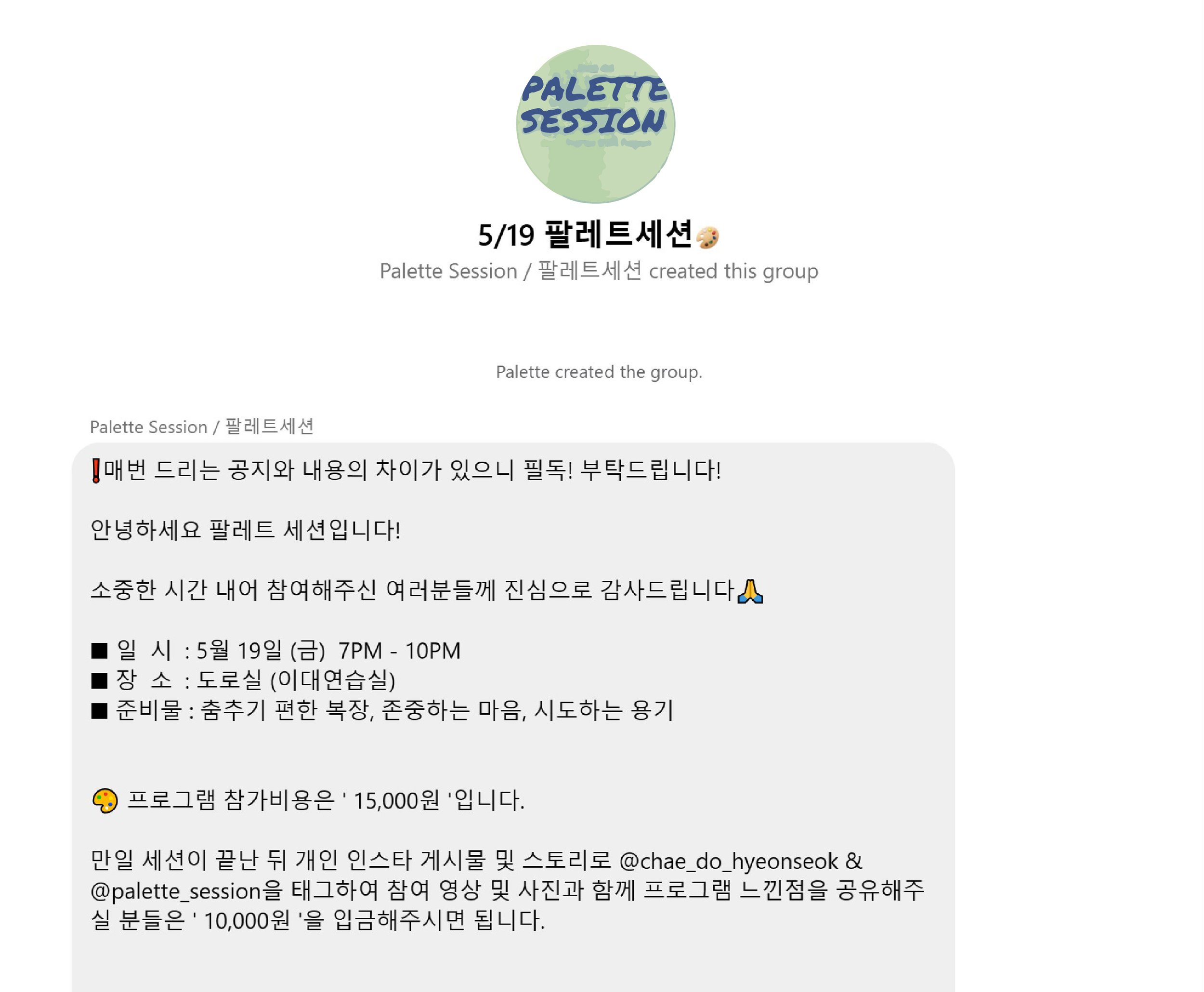
Register for Palette Session via their Instagram account (@palette_session). The monthly schedule of sessions is released a few days before the start of each month.
Use the app Papago / Google Translate to translate instructions and information about the session. This information will be provided to you once you are added into the Instagram Group chat.
Pay the participation fee of 10,000 won or 15,000 won. This depends on whether you elect to share a review of Palette Session on your Instagram Story or Feed. Contact the organiser to pay in cash directly.
Submit a song to Palette Session’s Instagram account.
Palette Session is facilitated in Korean but is open to foreigners as well. From my experience with a basic fluency in Korean, I was able to follow along by emulating the behaviours of other participants.
Within a genre-segregated street dance scene like South Korea, Palette Session serves as a melting pot for dancers of all styles to push themselves with regards to movement. In the spirit of this ethos, Palette Session continues to experiment with new formats such as a Palette Battle and Palette Showcase to create platforms for dancers to uncover their individual identities. It continues to grow from strength-to-strength, influencing the South Korean street dance scene one session at a time.


